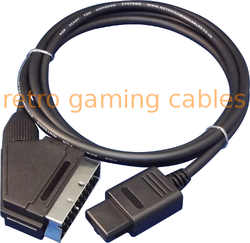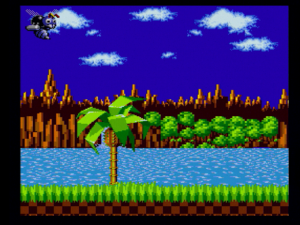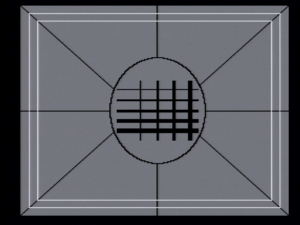 When it comes to buying a Super Nintendo or Super Famicom in the UK and Europe, finding a PAL model is usually cheaper and easier than an NTSC one. However, the PAL console has a number of drawbacks. Even when freed from the shackles of the PAL regional lock, the console lacks the clean/pure sync output that the NTSC model boasts, meaning those lovely composite sync cables that featured in the recent My Life In Gaming video simply won’t work. For this reason alone, many retrogamers have avoided the PAL Super Nintendo, but perhaps now that isn’t necessary. While there isn’t a composite sync signal, there is an S-Video signal that we can use instead. By using the luma output from the S-Video signal for sync, we can potentially get a less polluted sync signal from the console, but is this enough to make a difference?
When it comes to buying a Super Nintendo or Super Famicom in the UK and Europe, finding a PAL model is usually cheaper and easier than an NTSC one. However, the PAL console has a number of drawbacks. Even when freed from the shackles of the PAL regional lock, the console lacks the clean/pure sync output that the NTSC model boasts, meaning those lovely composite sync cables that featured in the recent My Life In Gaming video simply won’t work. For this reason alone, many retrogamers have avoided the PAL Super Nintendo, but perhaps now that isn’t necessary. While there isn’t a composite sync signal, there is an S-Video signal that we can use instead. By using the luma output from the S-Video signal for sync, we can potentially get a less polluted sync signal from the console, but is this enough to make a difference?
Our friends at Retro Gaming Cables were generous enough to send us one of their newest spec Super Nintendo Luma for Sync cables to test. While a lack of shielding meant that their earlier design SNES/Super Famicom cables were not well received by some customers, we are pleased to report that these issues have been addressed with these newer design cables, which are now fully shielded and grounded. To find out if luma for sync is more than just a gimmick, we tested the cable with the venerable XRGB3 upscaler. For those of you not familiar with this device, it’s the XRGB Mini’s older brother, a scaler still prized by many gamers for its ability to upscale 240p to 480p with no input lag at all. One of the XRGB3’s many quirks is the issues it has with composite video for sync cables. When using composite video for sync there are two common problems. Firstly, when a game goes from a dark picture to a bright one suddenly (for instance, an explosion or a lightning strike) the XRGB3 loses sync and the picture disappears for a few seconds. Secondly, certain colours on the screen exhibit a strange dot-crawl type pattern. Certain TVs are known to exhibit this behaviour too.
Firing up the 240p test suite on our PAL console we used the white and RGB Screen test and cycled between light and dark screens several times and we’re delighted to say that the XRGB3 never lost the picture once, meaning this cable works just as well as one using clean composite sync as far as this test is concerned, a great result!
To check the dot crawl issue, we used the colour bar test and drop shadow tests in the 240p test suite as well as a number of games that had exhibited the issue in the past. There was no sign of the dot crawl issue in any of the images we tested.
To round off the review, we used the white screen test again to check for the common issue of audio buzz that most Super Nintendo RGB cables have. Here the cable performed less well, with the annoying buzzing sound becoming audible at lower volumes compared with our NTSC Super Famicom and our Retro Gaming Cables RGB SCART lead. It’s still better than a lot of cables we’ve encountered however.
In conclusion then, our tests would seem to indicate that this cable is every bit as good as using a pure composite sync RGB cable. Picture quality was excellent and there were none of the issues the XRB3 usually exhibits with composite video for sync. The slightly disappointing audio performance aside, this cable has exceeded our expectations and is an ideal purchase for PAL Super Nintendo owners.
Screenshots
Below are some screen grabs we took while testing the cable. Click on any screenshot to enlarge it.






I know i’m a bit late responding to this article, but i would appreciate it if you could test/review the PAL SNES RGB SCART CABLE found on http://www.consolegoods.co.uk/
I’m curious if it performs better than the Retro Gaming Cables one (and perhaps test a new cable from the latter, as almost a year has passed since the article was posted).
Thank you in advance! 🙂
Regards,
copyitright – a retro (handheld) console lover